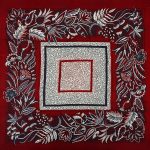Last Updated:
Two recent studies have highlighted how the small insect links numbers and space.
The research showed how bees prefer to order lower numbers on the left.
Scientists are amazed by bee’s intelligence and cognitive prowess. According to two recent researches, bees appear to show a preference for a direction when counting, just like humans and certain other creatures. Previously believed to be exclusive to humans, primates, and birds, they tend to count objects from left to right.
According to a study led by a team in Europe, bees, like many people, prefer to arrange greater numbers on the right and lower numbers on the left. This relationship between space and numbers in the bee’s brain was further investigated under the direction of Jung-Chun (Zaza) Kuo and her supervising team.
Humans link the ideas of “space” and “number.” This indicates that the way we arrange numbers usually in ascending sequence from left to right: 1, 2, 3, 4, and so forth has logic. Studies have also shown that humans may also prefer to process numerical information vertically, from bottom to top. Educational influences might also be present, particularly in the direction of language and writing. English is one of the languages that write from left to right. Other languages, such as Arabic, Hebrew, Chinese, Korean, and Japanese, can be written in different ways. Our preferred order of numbers can be influenced by writing directions.
Honey bees demonstrate evidence of being small mathematicians and effective learners. Previous studies have shown that bees can add and subtract, comprehend the idea of zero, express numbers with symbols, arrange quantities, classify numbers as odd or even, and demonstrate a connection between numbers and spatial information such as size. Thus, bees were the perfect animals to study how numbers and space interact in a small brain because of their proficiency with numbers.
In the study, flying bees were given sugar water to visit an image of three circles printed on a card which served as a reference number. The card was hung in the centre of a large circular screen, with a drop of sugar water on a platform underneath it. The bees discovered a connection between the number three, the centre of the circular screen, and a reward as they kept going to the reference number.
The bees returned to their hive to turn the sugar water into honey in between visits. The same test was conducted on bees on numbers higher and lower than three to see if they had connected space and number.
On the left and right sides of the screen, two identical pictures of four shapes were displayed at the same time. Bees would fly more to the quantity of four on the right than to the quantity on the left if they liked the higher number on the right. For the smaller number of two shapes. Bees, like humans, have a left-to-right mental number line, as shown by their preference for four circles on the right and two on the left.
There was no preference for connecting space and number vertically when it was evaluated whether bees preferred to rank numbers upwards or downwards. Bees did, however, favour alternatives near the bottom of the circular screen. According to the European team’s investigation, bees consistently have a mental number line that runs from left to right. This indicates that they favour placing greater numbers on the right and lower ones on the left.
Higher numbers on the right were preferred by the bees in the study. This might be because the preference for smaller numbers on the left was offset by the right-side bias. When combined, the results of both investigations demonstrated that bees have a bias towards the right side of their visual area and have a left-to-right mental number line.
These two recent studies on bees show that there is a complex interaction between ordering numbers by an insect brain.
- Location :
Delhi, India, India







